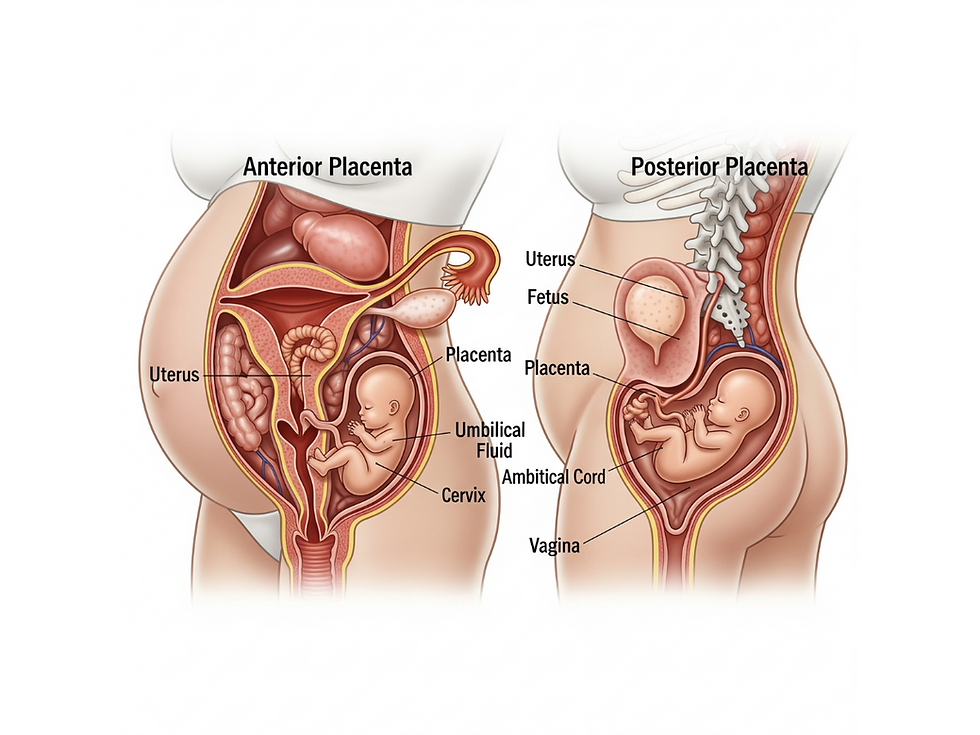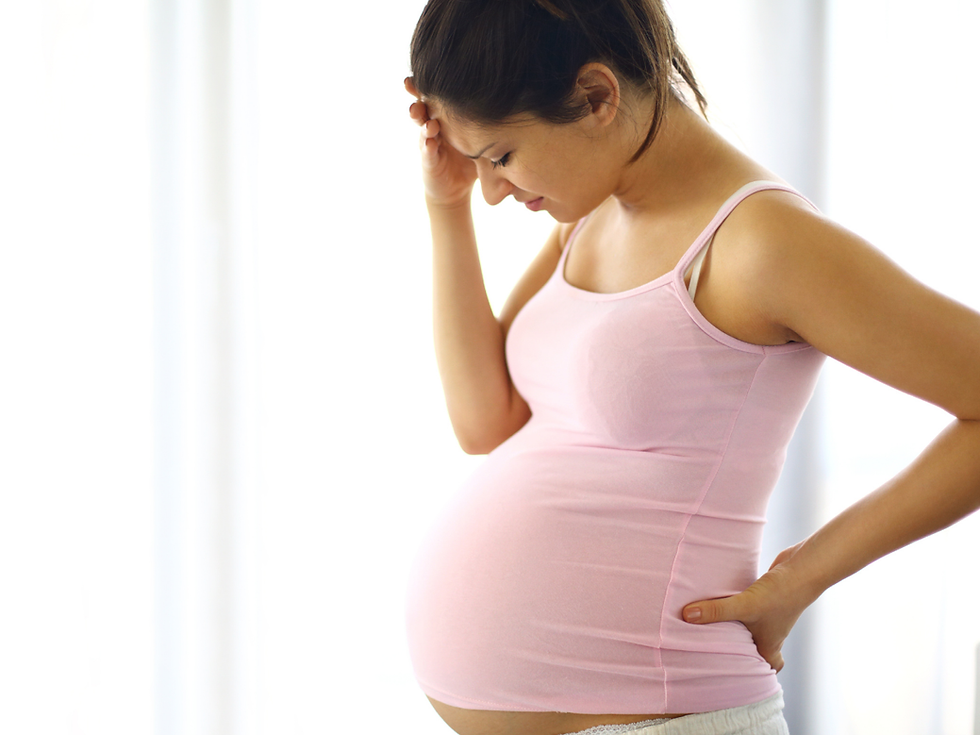Difference Between Anterior and Posterior Placenta: What Expecting Mothers Should Know
- marketingdrprachi
- Sep 12
- 3 min read
Pregnancy is a beautiful journey, and every mother-to-be wants to ensure the best possible health for herself and her baby. During an ultrasound, one of the terms you may hear from your gynaecologist in Gurgaon is placenta position. The placenta is a vital organ that supports your baby’s growth by providing oxygen and nutrients. Its location can be described as anterior or posterior, depending on where it attaches inside the uterus.
To help expecting mothers understand this better, Dr. Prachi Sarin Sethi, Consultant at Motherhood Hospital Gurgaon and Viva Women Clinic, explains the difference between anterior and posterior placenta and whether it impacts pregnancy outcomes.

What is the Placenta?
The placenta is a temporary organ that develops during pregnancy and attaches to the uterine wall. It connects to the baby through the umbilical cord and ensures proper nourishment, oxygen supply, and waste removal. While it is always essential, the position where it attaches-front (anterior) or back (posterior)—may slightly influence pregnancy experience, especially when it comes to feeling baby movements or conducting ultrasound scans.
What is an Anterior Placenta?
An anterior placenta means the placenta is attached to the front wall of the uterus, closer to the mother’s abdomen.
Key Features of Anterior Placenta:
Baby movements: Mothers may feel baby kicks slightly later, usually after 20–22 weeks, because the placenta cushions the movements.
Ultrasound scans: Sometimes it may make imaging slightly less clear, but trained doctors can still assess the baby effectively.
Pregnancy outcome: An anterior placenta does not generally affect delivery or the health of the baby.
According to Dr. Prachi Sarin Sethi, women with an anterior placenta should not worry. It is a normal variation, and most pregnancies progress safely. However, in rare cases, it may make procedures like amniocentesis or caesarean section a bit more technically challenging for doctors.
What is a Posterior Placenta?
A posterior placenta means the placenta attaches to the back wall of the uterus, closer to the spine.
Key Features of Posterior Placenta:
Baby movements: Mothers usually feel baby kicks earlier, around 18–20 weeks, since there is no cushion between the baby and the abdominal wall.
Ultrasound scans: Baby’s position is easier to visualise, making scans clearer.
Pregnancy outcome: A posterior placenta is often considered the most common and favourable position, though both anterior and posterior are normal.
Dr. Sethi highlights that while a posterior placenta may allow earlier detection of fetal movement, it does not necessarily mean a healthier pregnancy compared to an anterior placenta.
Anterior vs Posterior Placenta: Key Differences
Aspect | Anterior Placenta | Posterior Placenta |
Placenta Position | Front wall of the uterus, near abdominal wall | Back wall of the uterus, near the spine |
Baby Movements | Felt slightly later | Felt earlier |
Ultrasound Clarity | May be cushioned, slightly less clear | Usually clearer view of the baby |
Pregnancy Outcome | Generally safe | Generally safe |
Delivery Impact | Rarely complicates caesarean procedures | Often considered favourable for delivery |
Does Placenta Position Affect Baby’s Health?
Both anterior and posterior placentas are medically normal and safe. Placenta position does not affect the growth, nutrition, or development of the baby. The only concern arises if the placenta is too low in the uterus - a condition called placenta previa-which may require special monitoring.
Dr. Prachi Sarin Sethi reassures expecting mothers that the focus should be on regular antenatal check-ups, balanced nutrition, and monitoring overall health, rather than worrying about the placenta’s location.
When Should You See a Gynaecologist in Gurgaon?
If you are pregnant and want expert guidance on ultrasound findings, you should consult a trusted gynaecologist in Gurgaon. Early and regular antenatal visits ensure that you receive professional care tailored to your pregnancy.
Dr. Prachi Sarin Sethi, Consultant at Motherhood Hospital Gurgaon and Viva Women Clinic, provides comprehensive pregnancy care, guiding women through every stage—from early scans to delivery. With years of experience, she ensures that mothers-to-be feel informed and reassured.
Final Thoughts
Understanding the difference between anterior placenta and posterior placenta can help ease unnecessary worries during pregnancy. Both positions are normal, and neither indicates any serious complications by itself. What matters most is maintaining regular check-ups, following medical advice, and ensuring the mother’s overall health.
If you are looking for compassionate and expert pregnancy care, consult Dr. Prachi Sarin Sethi, Gynaecologist in Gurgaon, at Motherhood Hospital Gurgaon or Viva Women Clinic. She can guide you through every aspect of pregnancy, ensuring a safe and smooth journey to motherhood.








Comments